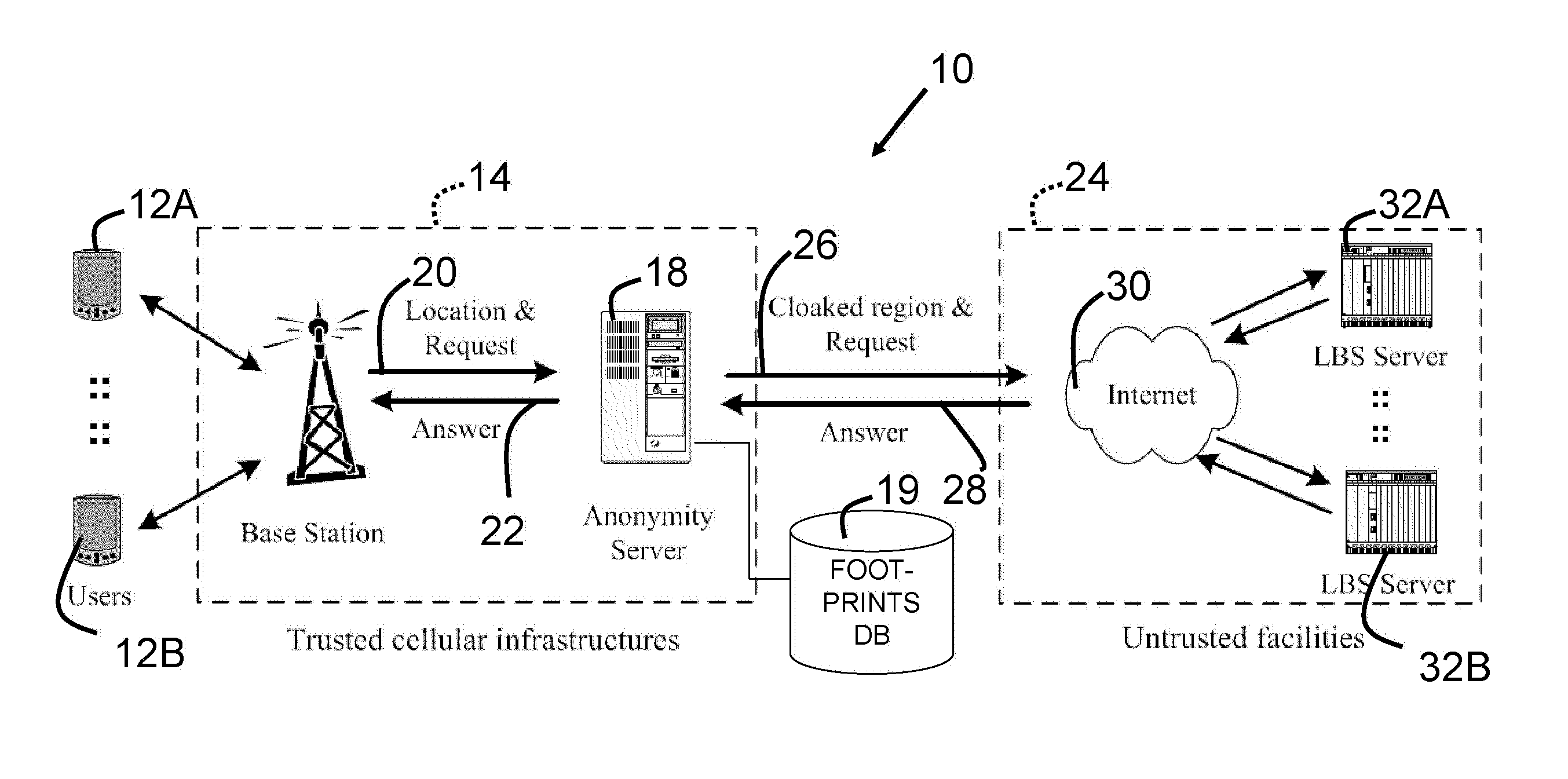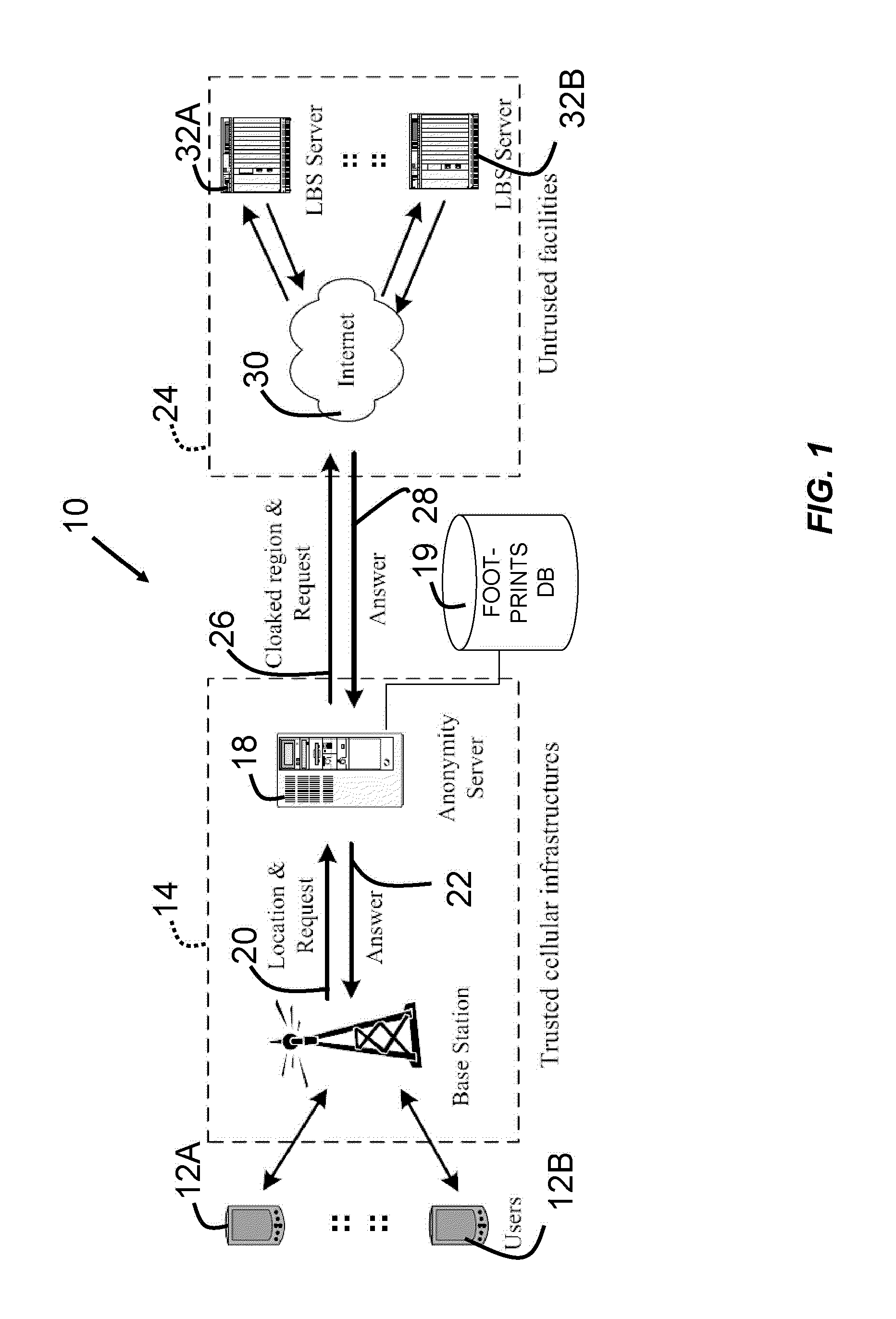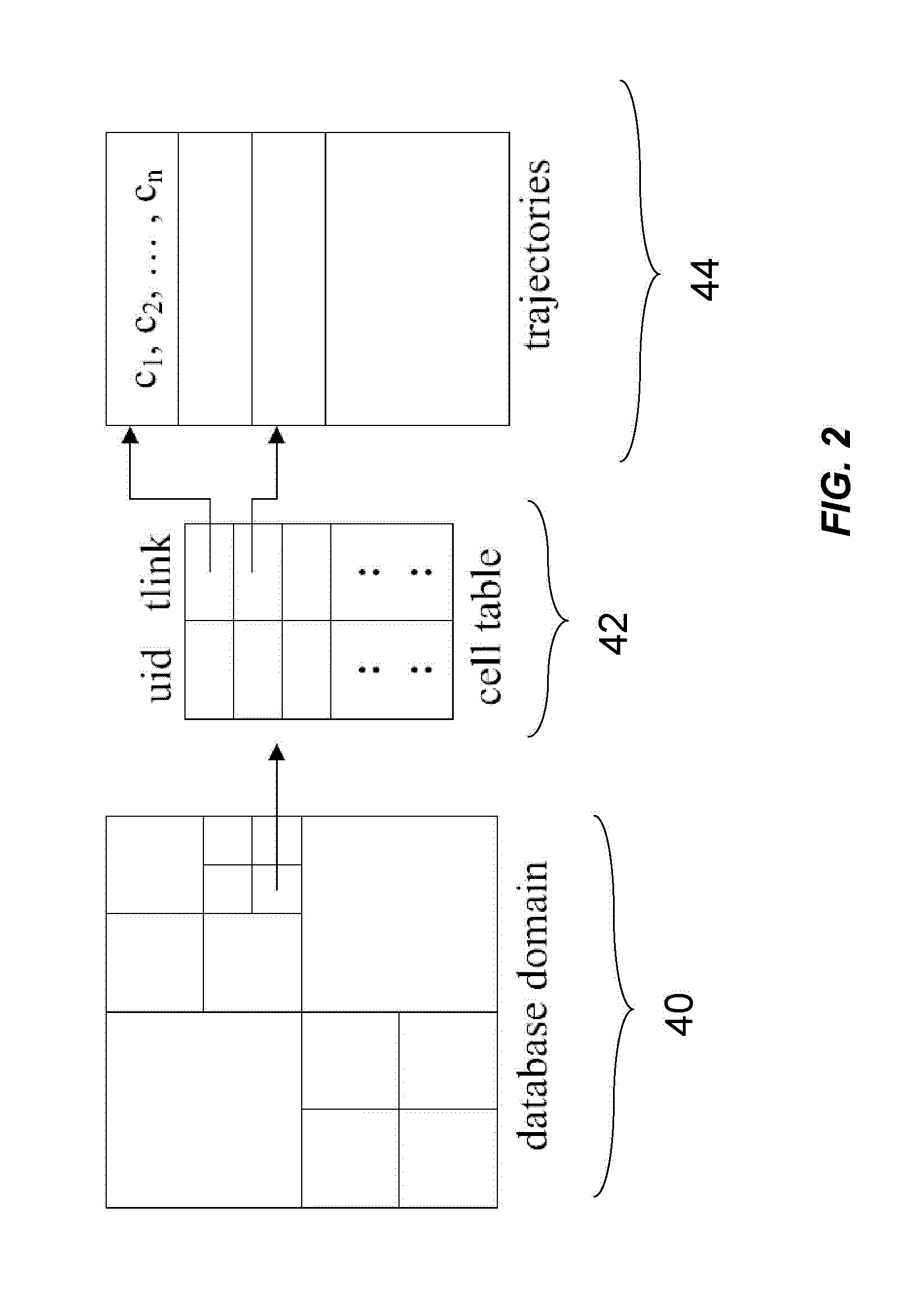Cloaking with footprints to provide location privacy protection in location-based services
a technology of location-based services and footprints, applied in the field of location-based services, can solve the problems of reducing, but not preventing, the inability to use location privacy protection approaches in location-based services, and the inability of adversaries to link the incoming and outgoing paths of these nodes, so as to achieve the effect of improving cloaking resolution and minimal impact on the quality of lbss
- Summary
- Abstract
- Description
- Claims
- Application Information
AI Technical Summary
Benefits of technology
Problems solved by technology
Method used
Image
Examples
Embodiment Construction
1. INTRODUCTION
[0033]Location-based services (LBSs) allow users'to query useful information such as nearest hotels, restaurants, and so on. While such applications offer significant opportunities for a broad range of markets, a major concern is the potential abuse of location data collected by service providers. Physical destinations such as medical clinics may indicate a person's health problems. Likewise, regular stops at certain types of places may be linked directly to one's lifestyle or political association. When location data is subject to risks such as potential misuse by insiders, unintentional or mistaken disclosure, encryption and policy-based approaches generally do not work. In the case of LBSs, users need to supply their location in order to use the services, yet the service provider may not be trustworthy in keeping this information safe. The users may be informed of the policies regarding the collection and distribution of their location data. In reality, however, th...
PUM
 Login to View More
Login to View More Abstract
Description
Claims
Application Information
 Login to View More
Login to View More - R&D
- Intellectual Property
- Life Sciences
- Materials
- Tech Scout
- Unparalleled Data Quality
- Higher Quality Content
- 60% Fewer Hallucinations
Browse by: Latest US Patents, China's latest patents, Technical Efficacy Thesaurus, Application Domain, Technology Topic, Popular Technical Reports.
© 2025 PatSnap. All rights reserved.Legal|Privacy policy|Modern Slavery Act Transparency Statement|Sitemap|About US| Contact US: help@patsnap.com



